Priceless memories are often found embedded in the brushstrokes of a painting, the gaze of a porcelain figurine or the remnants of ink upon a well-used writing desk. In our restoration studio, trained conservators protect many items that hold personal importance to clients, from family heirlooms to beloved portraits. This was the case with a ceramic centrepiece that came to our studio, it was in need of an intensive restoration after losing much of its sculptural detail during the first world war.
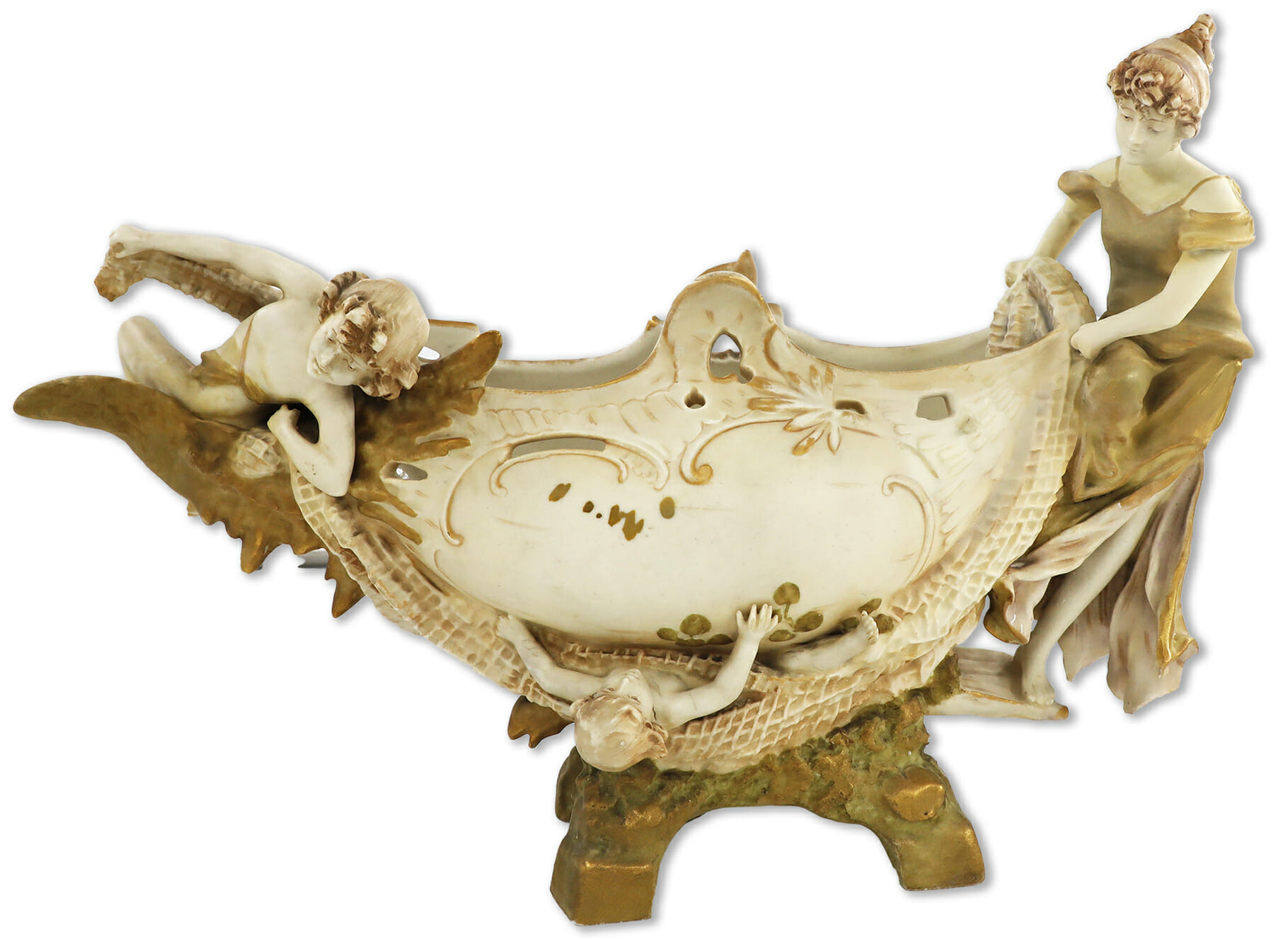
A beautiful art nouveau ceramic by Ernst Wahliss was left with just a head after being partly destroyed in a zeppelin raid. The grandmother of our client told them a terrifying tale of the bombing that had caused paintings to fall from the wall, landing dramatically on this treasured item. The ceramic went unrestored for over 100 years and came to us when our conservators were already working on the aforementioned paintings, two landscapes by Scottish artist Duncan Cameron.
 Above: a detail from one of the Duncan Cameron paintings
Above: a detail from one of the Duncan Cameron paintings
Upon recommendation from the family members who had come to us for painting conservation, it was agreed that our ceramics conservator would undertake the task of recreating the missing body.
Ernst Wahliss ceramics
Ernst Wahliss was a famous Austrian porcelain manufacturer, popular at the turn of the century due to an opulent and fashionable use of the art nouveau style. From 1894, ceramic pieces from the Ernst Wahliss factory were labelled Ernst Wahliss Kunst, Porzellan und Fayence Fabrik and were primarily produced in Bohemia (Czech Republic). As well as successfully dominating the retail market for decorative arts, Ernst Wahliss was also favoured by members of the aristocracy and royalty throughout Europe.
 Above: a detail from the Wahliss centrepiece
Above: a detail from the Wahliss centrepiece
This particular centrepiece vessel can be dated to 1897, making it relatively new at the time of damage (the zeppelin raids were from 1914 to 1918). The Ernst Wahliss factory temporarily closed during the first world war and production ended in the late 1920s. Due to this short window of creative output, Wahliss porcelain is today regarded with praise as a prime example of marketable decorative art from the turn of the century.
 Above: a detail of the Wahliss Royal Vienna maker’s mark
Above: a detail of the Wahliss Royal Vienna maker’s mark
Some of the most distinguishing features of art nouveau are the swirling whiplash lines and sense of movement. This can be clearly seen in the nautically inspired centrepiece, with three figures glancing into an imagined ocean, one of them caught in an intricately modelled net. There is also a sense of inspiration from opulent historic styles such as the rococo period, this had great emphasis on the rocaille curves seen here, as well as shells and netted features. We can assume that this centrepiece was designed for a household that admired the grandeur of past designs, whilst still aspiring to a fashionable modern interior.
Restoring a missing figure
Using photographs, historical knowledge of ceramic styles and the remaining pieces of the figurine, our conservator painstakingly recreated every detail. Several different versions of this centrepiece were found to exist following research by our team. Some have a hand painted floral design in the centre and others have golden foliage.
 Above: the figurine during restoration with the new body being modelled based on surviving examples
Above: the figurine during restoration with the new body being modelled based on surviving examples
This version does not have decoration in this area, perhaps due to historic gold leaf rubbing away or unglazed pigments fading in sunlight. Our conservator chose not to interfere with this part of the design, as there is no way of knowing what the original motif could have been, as perhaps they were hand finished to the customer’s preference at the time. Instead, the focus was on the broken figurine that has a close match to other centrepieces in this style.
 Above: the new areas were the body of the figurine and the far end of the centrepiece
Above: the new areas were the body of the figurine and the far end of the centrepiece
The restoration of the figurine would help to protect the exposed areas of ceramic that may have become vulnerable to further deterioration. Using conservation approved solutions, our conservator cleaned the area and prepared it to be bonded with the new features. Unlike household glues, conservation materials avoid high levels of pH to avoid acidic contamination of the surface. This prevents the new joins from yellowing and causing harm in the future. The body of the figurine was carefully sculpted by hand over a course of weeks.
 Above: the Wahliss centrepiece before and after restoration by our ceramics conservator
Above: the Wahliss centrepiece before and after restoration by our ceramics conservator
Once the body was complete, our conservator undertook the task of colour-matching the tones to give a seamless effect. The texture of the original ceramic was also matched, ensuring the biscuit porcelain appearance was uninterrupted by the restored area. The result was a breathtaking experience for our client, who had never seen it in its full form.
Paintings by Duncan Cameron
Prior to the restoration of their Wahliss ceramic, the family also had the two paintings that had fallen off the wall during the zeppelin raid restored by our conservators. These landscapes were by Perthshire born artist Duncan Cameron, well known for his paintings of Scotland – particularly the countryside around Edinburgh and Stirling.
 Above: a detail from one of the Duncan Cameron paintings
Above: a detail from one of the Duncan Cameron paintings
Cameron was part of the Royal Academy, training in Dundee and London. He exhibited numerous times between 1872 and 1900, winning the highest honour in 1876 – the gold medal, awarded to him at Crystal Palace for the best painting in the landscape genre. His most famous works depict sweeping cornfields, a subject so important to his art that his obituary would mention “his distinctive note was best expressed in the treatment of cornfields.” Cameron died around the same time as the zeppelin raids would have taken place in 1916.
The paintings had aged remarkably well but did require a surface clean and varnish removal to revive the original colours of the paint. This was undertaken by our easel painting conservators, who cleaned the artwork inch by inch before removing the varnish with similar swab methods. The varnish was replaced with a new conservation-approved variety.
 Above: one of the Duncan Cameron paintings before and after restoration by our team, including revival of the original frame
Above: one of the Duncan Cameron paintings before and after restoration by our team, including revival of the original frame
Client testimonial
Upon the first photographs of completion, our client was delighted to see the figurine back in its original condition.

Our customer journey team and ceramics conservator were pleased to be part of this rewarding project. Upon reading the first draft of this article, they were overjoyed to be able to share a part of their family history.
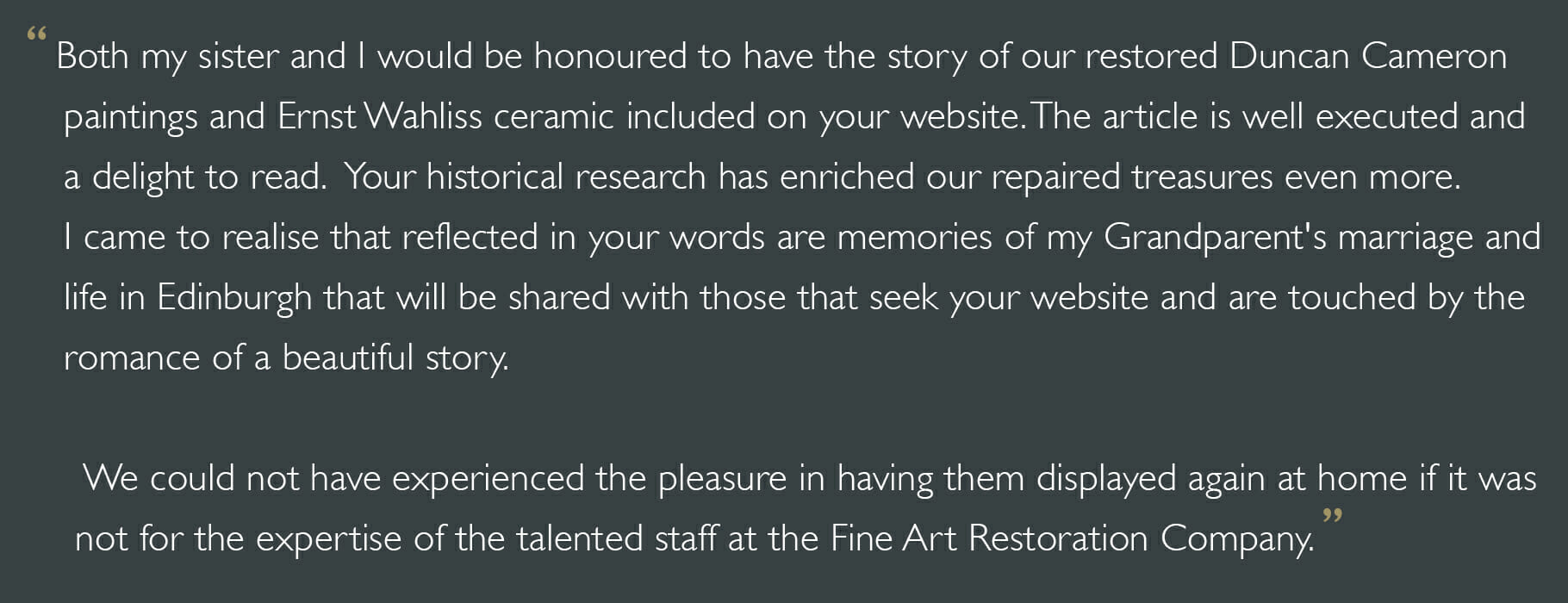
How can we help?
If you have an artwork, decorative item or unusual object in need of professional care, please speak to our helpful team who will be happy to assist you further.
To make contact please email us via [email protected] or call 0207 112 7576

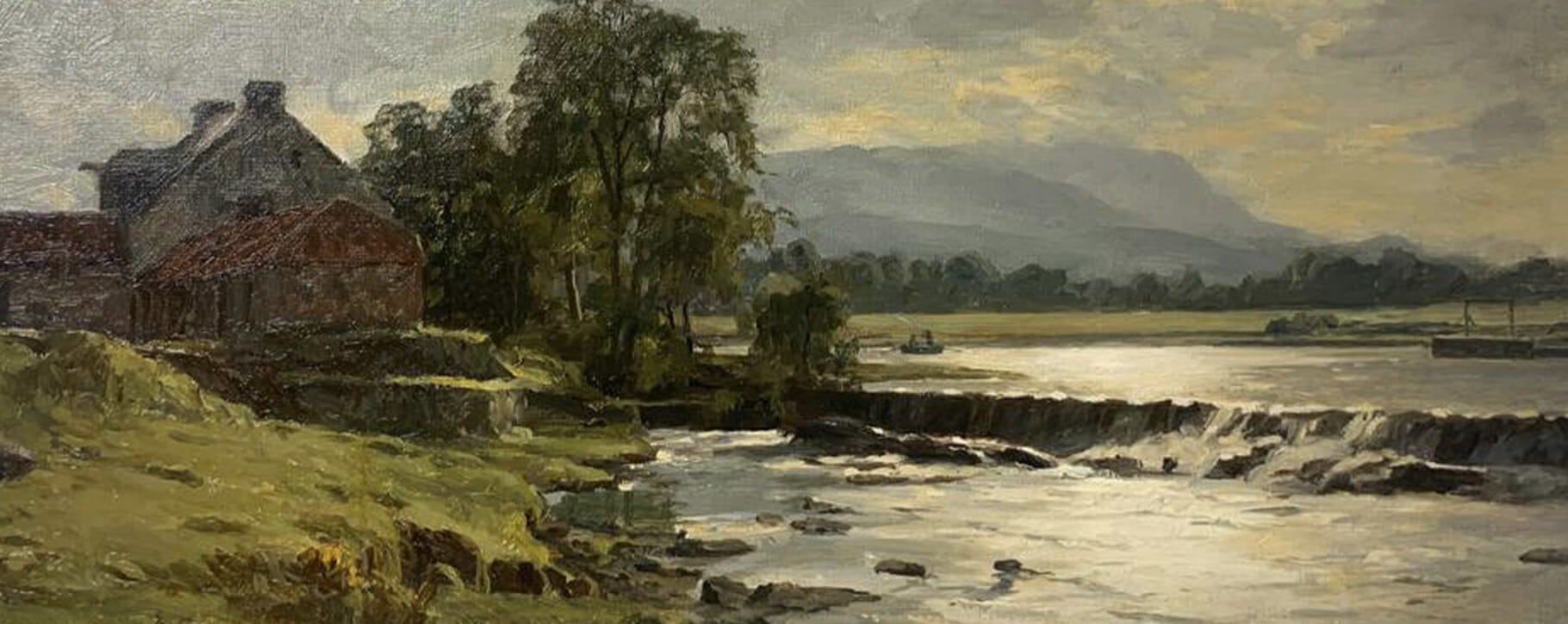 Above: a detail from one of the Duncan Cameron paintings
Above: a detail from one of the Duncan Cameron paintings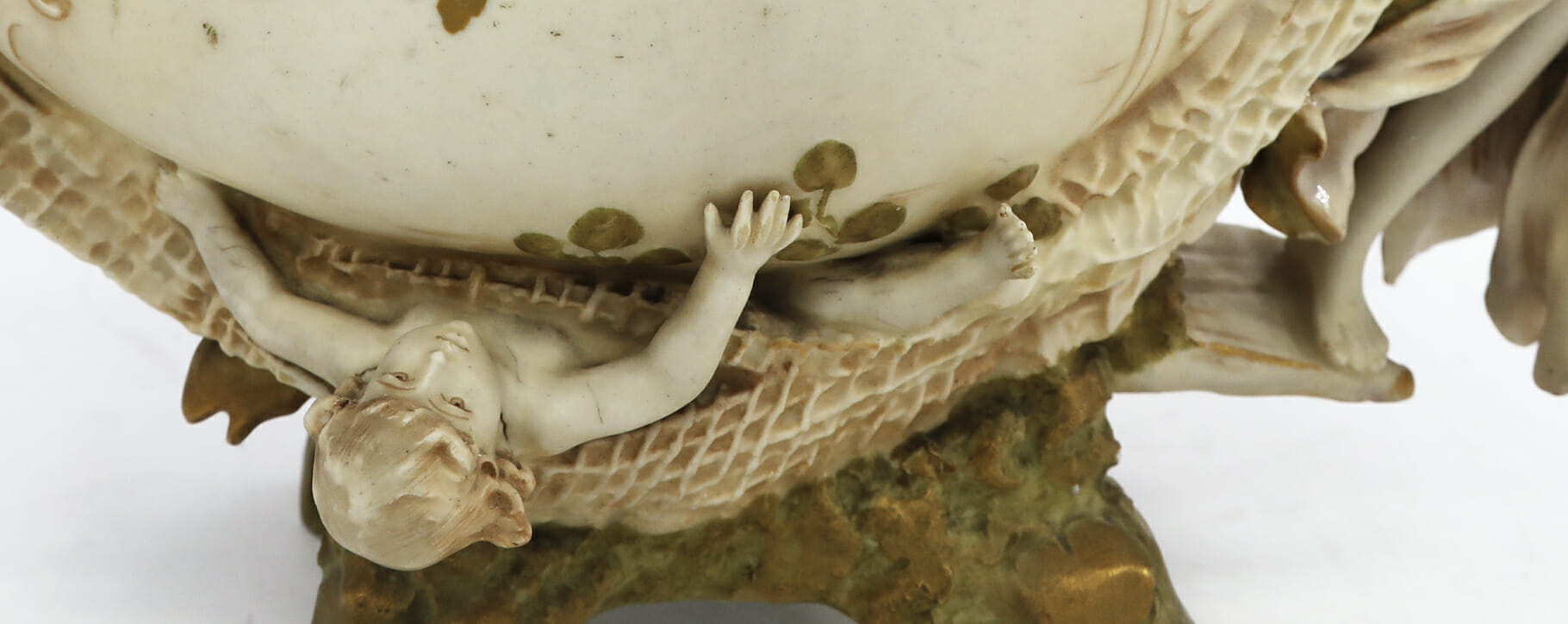 Above: a detail from the Wahliss centrepiece
Above: a detail from the Wahliss centrepiece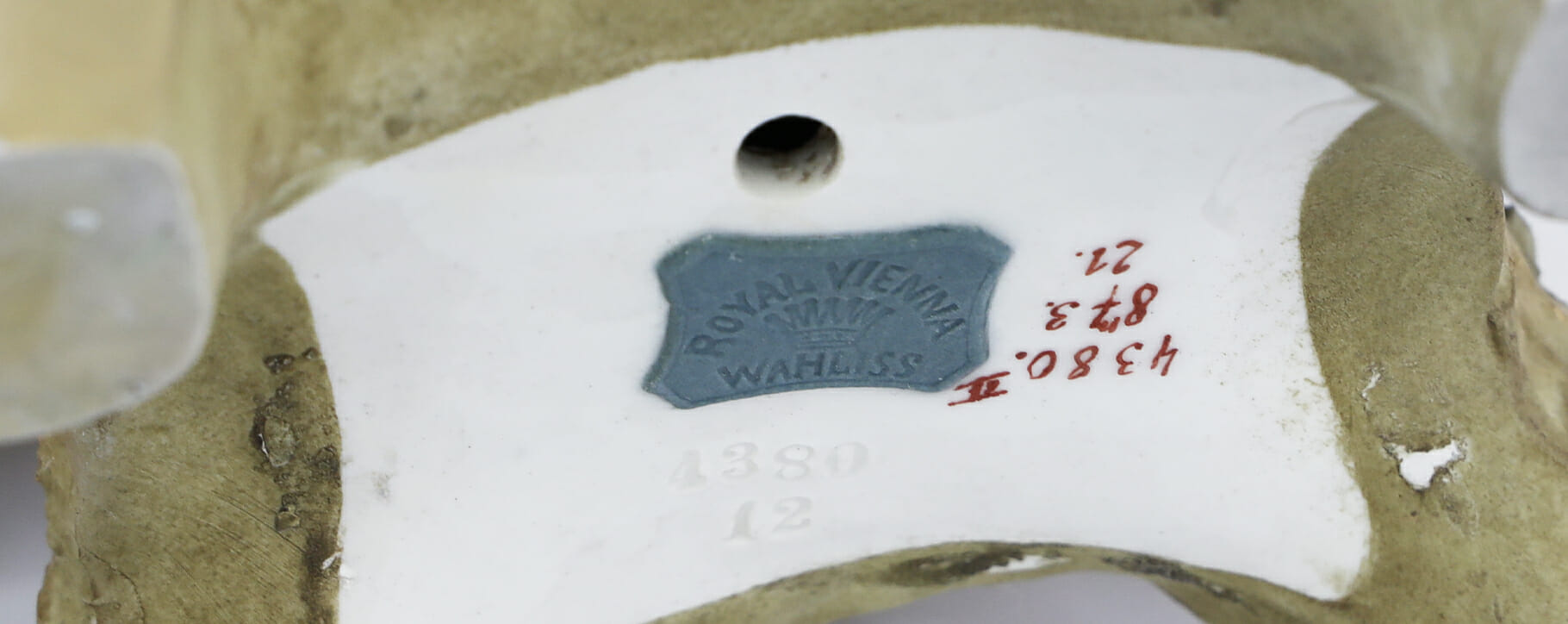 Above: a detail of the Wahliss Royal Vienna maker’s mark
Above: a detail of the Wahliss Royal Vienna maker’s mark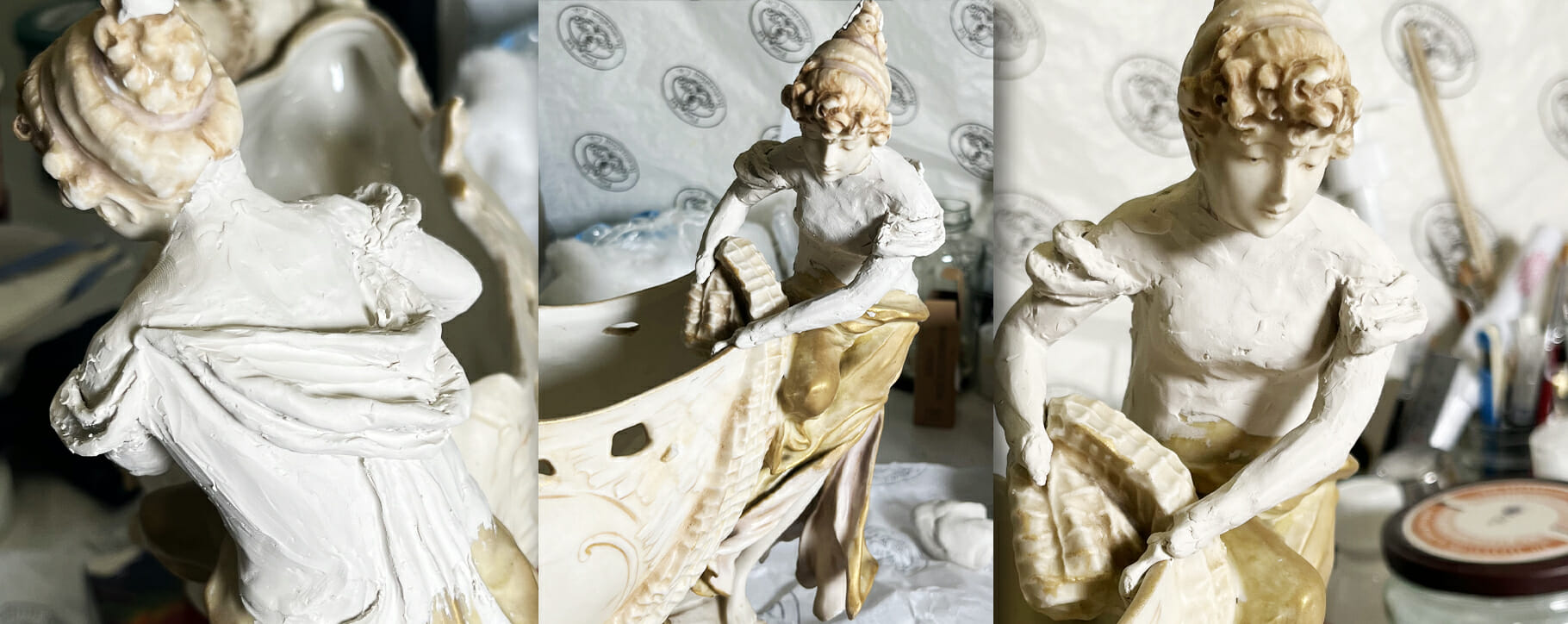 Above: the figurine during restoration with the new body being modelled based on surviving examples
Above: the figurine during restoration with the new body being modelled based on surviving examples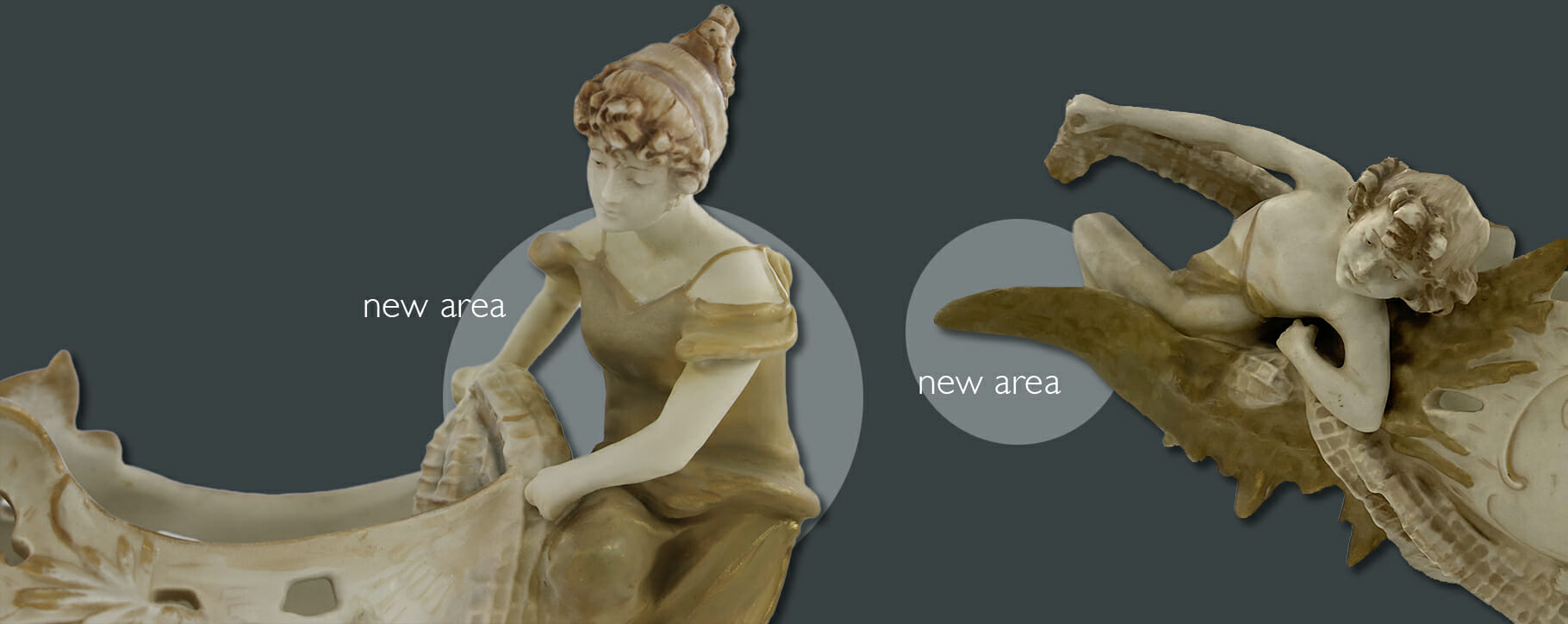 Above: the new areas were the body of the figurine and the far end of the centrepiece
Above: the new areas were the body of the figurine and the far end of the centrepiece Above: the Wahliss centrepiece before and after restoration by our ceramics conservator
Above: the Wahliss centrepiece before and after restoration by our ceramics conservator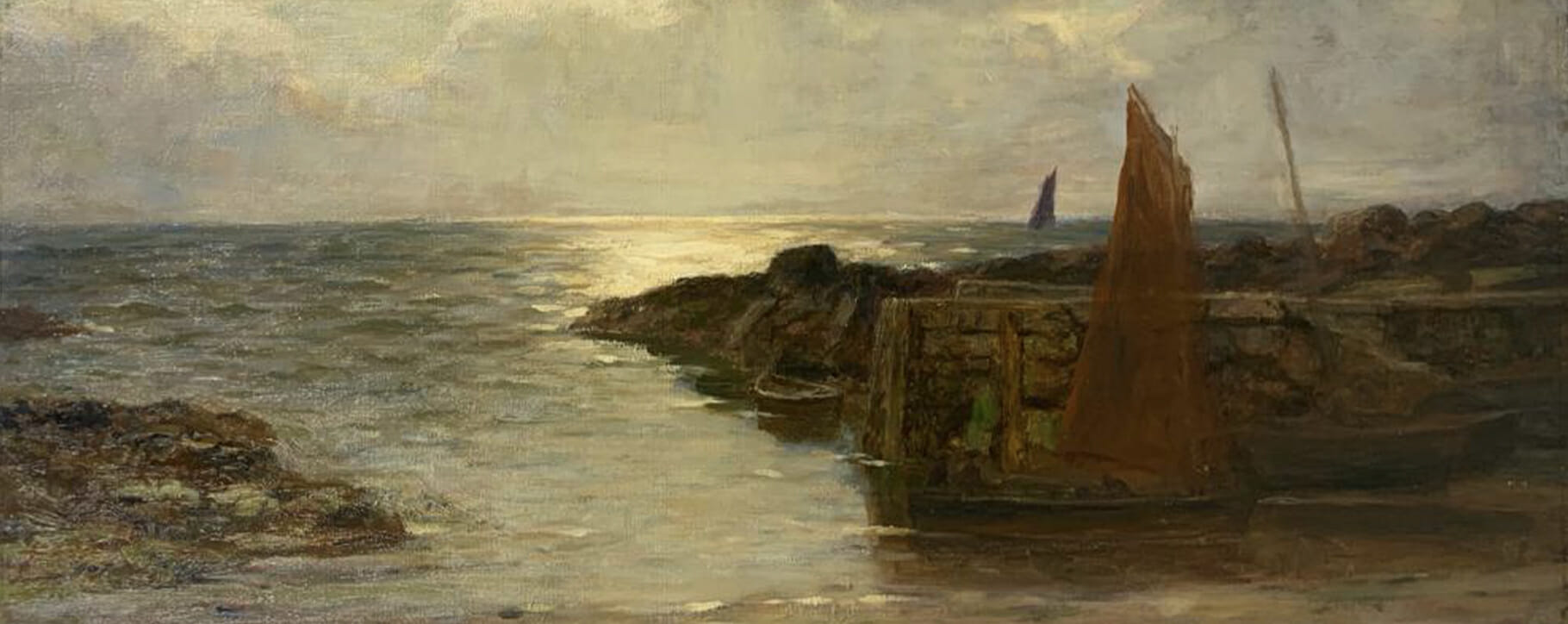 Above: a detail from one of the Duncan Cameron paintings
Above: a detail from one of the Duncan Cameron paintings
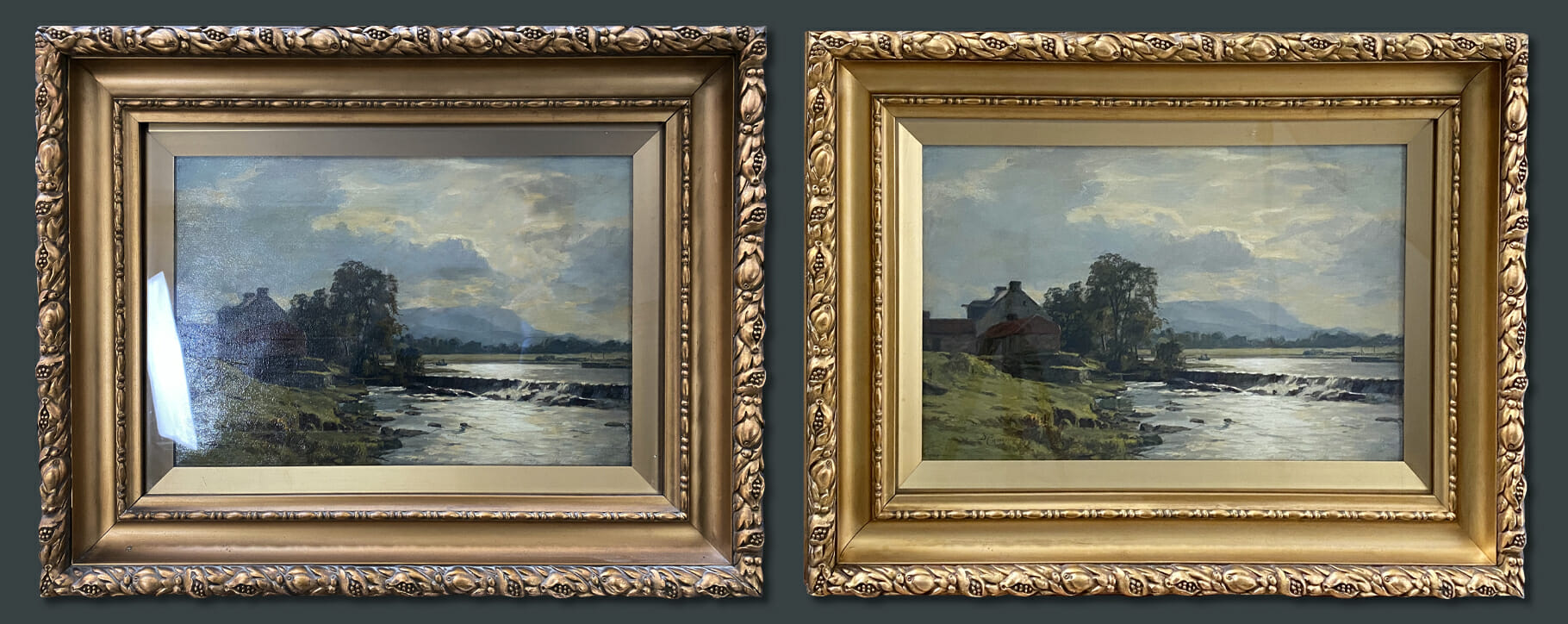 Above: one of the Duncan Cameron paintings before and after restoration by our team, including revival of the original frame
Above: one of the Duncan Cameron paintings before and after restoration by our team, including revival of the original frame




